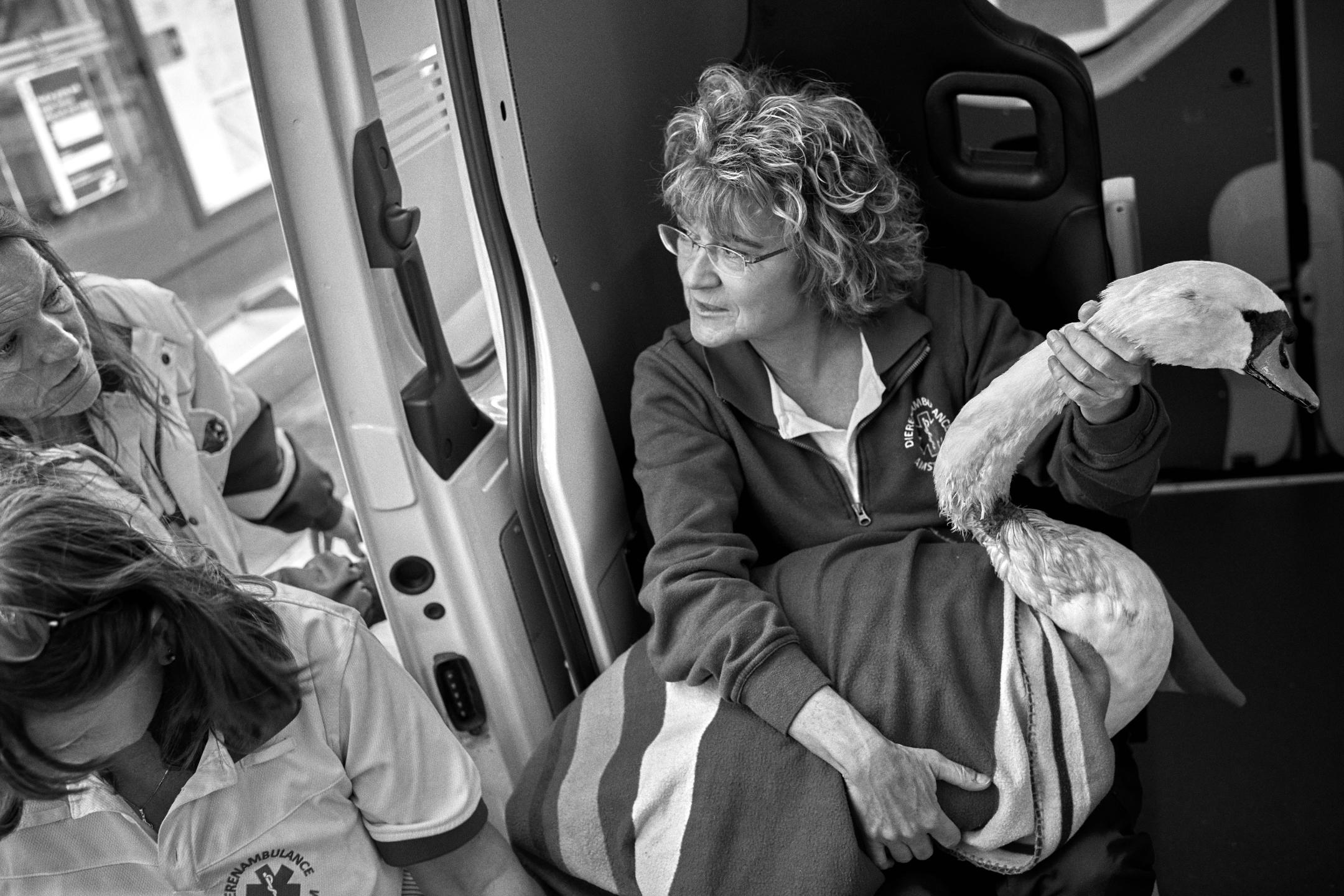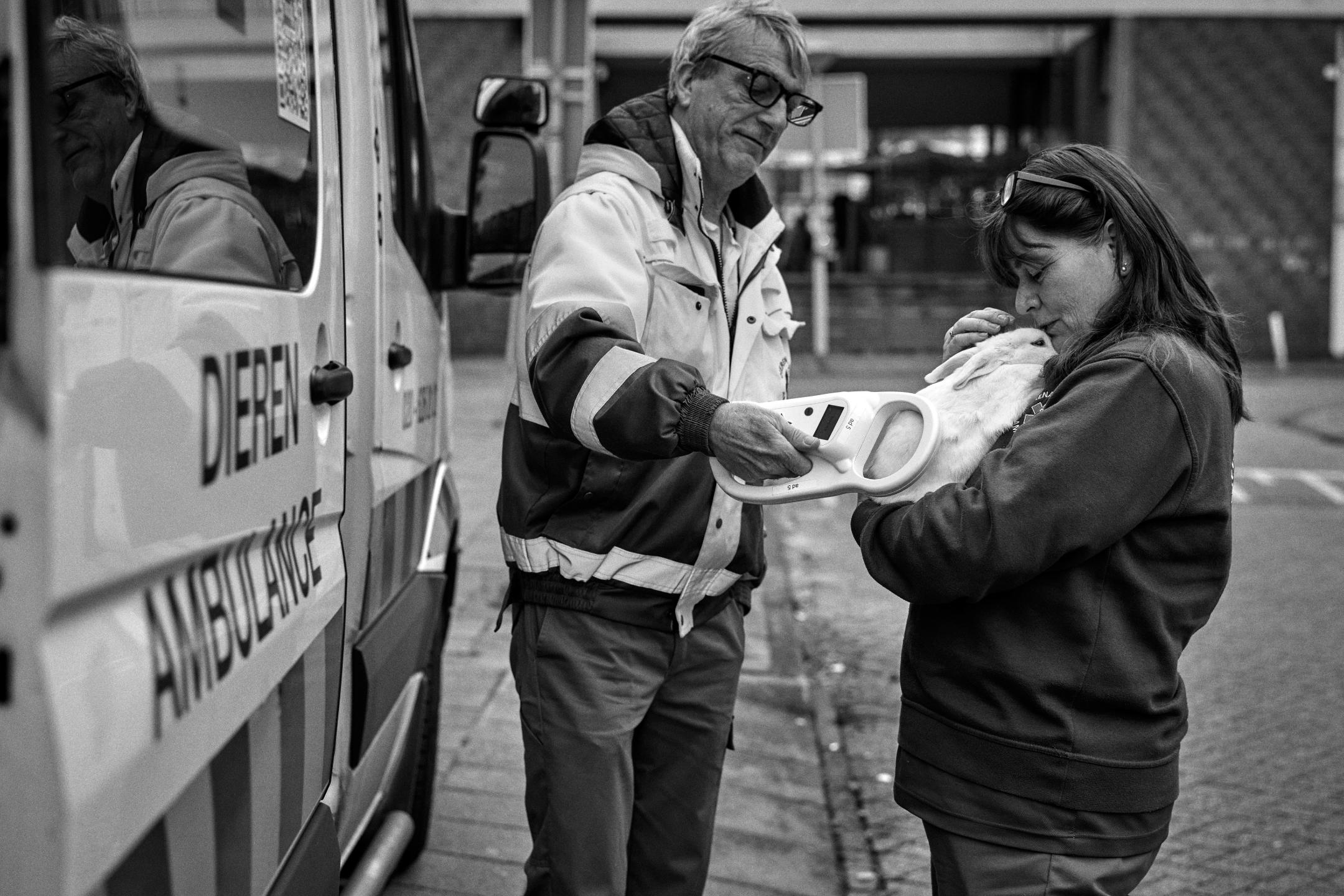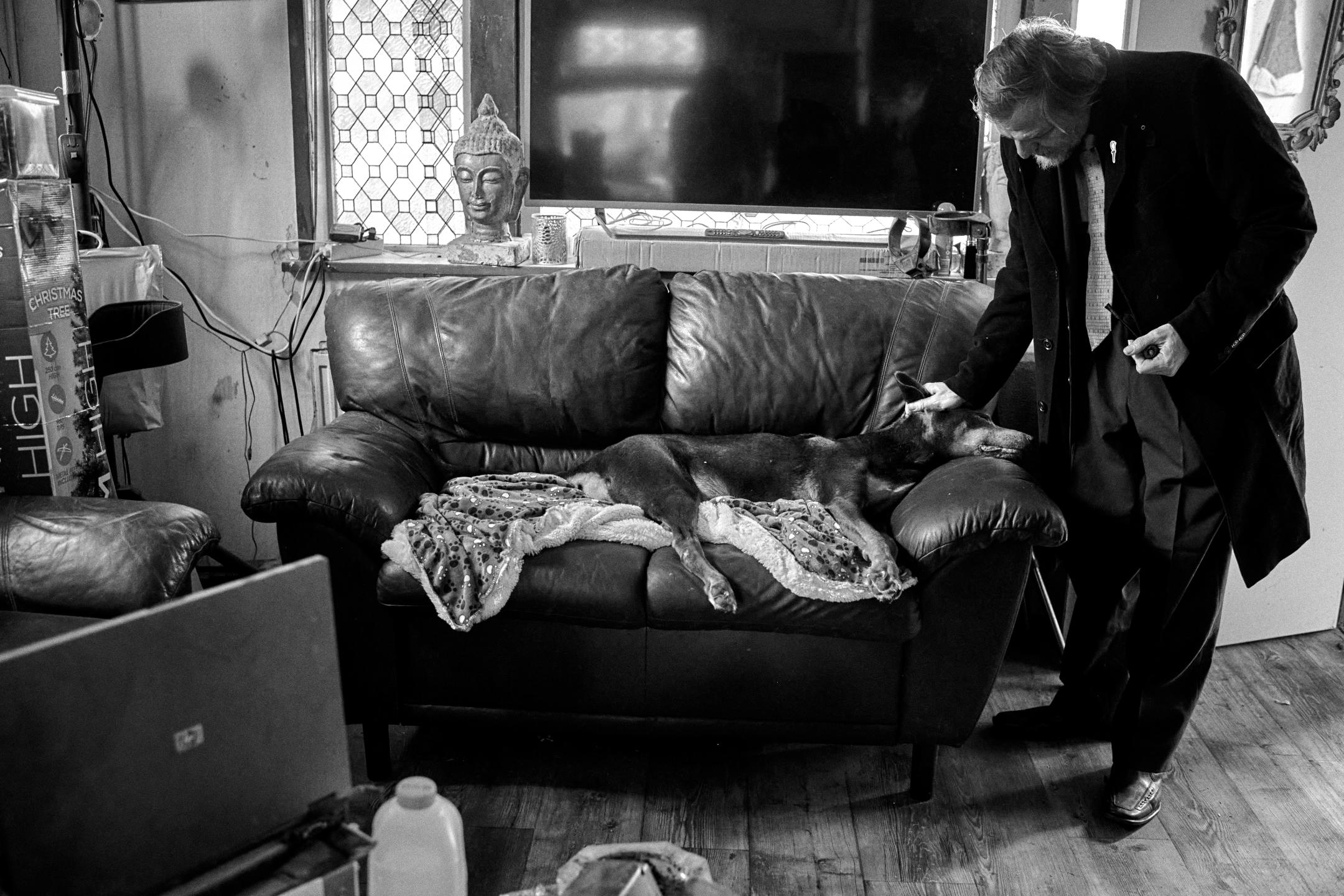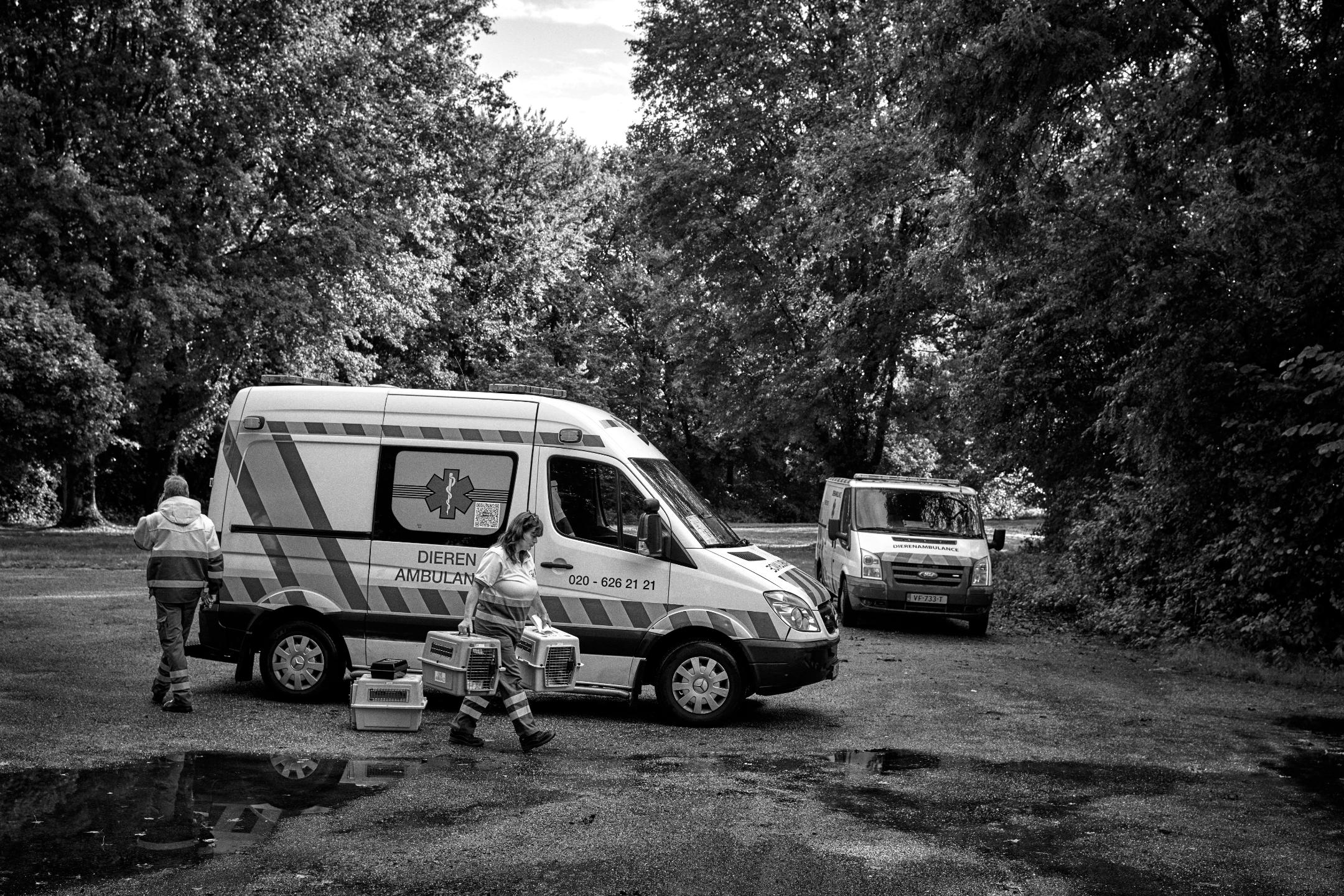A City That Cares
Text and photos by Marcel Bakker
Abridged by Syharn Shen (沈思含)
A City That Cares
Text and photos by Marcel Bakker
Abridged by Syharn Shen (沈思含)

Saskia Damman holds an injured swan after it struck a construction fence at Strand IJburg. Following treatment at the clinic, it is taken to a wildlife refuge to recover.
In the heart of Amsterdam—a city of canals, bicycles, and progressive ideals—lives a quiet emblem of compassion: the Dierenambulance Amsterdam. This 24/7 emergency response system serves animals—wild or domestic, endangered or common—treating their welfare as part of the city's essential services. Where most cities treat animal emergencies as peripheral, Amsterdam embeds animal welfare into its infrastructure, extending dignity and care to all cohabitants of public space.
The service began in the early 1970s under the Central Doctors Service, which provided after-hours human medical care and occasionally transported animals. When the organization decided to focus solely on people, the animal service was sold for a symbolic one guilder. Two human ambulances were purchased, converted for animal care, and on May 8, 1978, the Central Animal Ambulance Foundation was officially registered.
Over four decades later, it has grown into one of the most advanced municipal animal ambulance systems in the world. Today, six fully equipped ambulances operate with 14 staff and over 175 trained volunteers, responding with the precision of any human emergency service. In 2024, the Dierenambulance handled 44,709 calls—an average of 123 a day—covering 198 species. There were 15,420 rides, or roughly one every 34 minutes. Among those rescued were 3,632 pigeons, 2,304 cats, 891 dogs, 804 seagulls, 447 ducks, 483 hedgehogs, 161 bats, 25 foxes, and even two pythons. That year, 3,412 lost pets were reunited with their owners, 2,987 injured wild animals were transferred to rehabilitation, 412 cases of abuse or neglect were reported to authorities, and 289 traffic-related animal incidents were resolved.

A tame stray rabbit, roaming Bernard Lodderstraat for days, is collected and taken to the Animal Shelter Amsterdam.
Amsterdam's Dierenambulance works closely with police, firefighters, and transport authorities. Traffic may be rerouted for a swan on the highway, or firefighters called to help a cat stranded on high-rise scaffolding. The sight of the ambulances weaving through traffic is as familiar as garbage trucks—a quiet sign that animal rescue is a normalized part of civic life.
The city's dense, water-rich environment teems with wildlife—swans, ducks, foxes, owls, hedgehogs, even feral parakeets—alongside thousands of domestic pets. Animal emergencies range from tram accidents to pollution entanglements. The Dierenambulance also serves public health by removing infected birds during avian flu outbreaks, collecting deceased animals, and preventing disease spread.
Crews are often the first to detect neglect or abuse, leading to decisive action and rescue. They assist grieving pet owners, transport deceased animals humanely, and rehome pets when owners are hospitalized or pass away. Their work upholds a compassionate standard of living for all residents.

Louis Petit says goodbye to his 15-year-old Doberman, Donna, who died the night before. The animal ambulance collects her for cremation and donates Louis's extra dog food to a shelter.
While the city provides structural and logistical support, the service depends heavily on donations, sponsorships, and income from non-emergency services such as pet transport, microchipping, and educational outreach. Inflation, rising veterinary costs, and growing call volumes strain the budget, yet the organization's value—both practical and symbolic—remains clear.
Internationally recognized, the Dierenambulance is formally integrated into the Amsterdam-Amstelland Safety Region, coordinating with shelters and aid organizations. This level of integration is rare elsewhere and could inspire similar systems worldwide, as more cities recognize the link between animal welfare, public health, and emergency readiness.
The Dierenambulance is more than a service—it is a statement: animal well-being is neither luxury nor afterthought, but a measure of humanity. In Amsterdam, kindness is not selective. Each rescued pigeon or soothed cat reflects a city where care extends to all beings. As cities face climate change, dense populations, and increasing intersections between urban life and nature, Amsterdam's model offers a blueprint for humane coexistence. True progress, it suggests, is also measured in quiet, daily acts to protect the vulnerable—sometimes riding in the back of a van with a softly meowing passenger inside.

Injured birds and animals are being delivered to the wildlife refuge.
Contact Us | Plan a Visit | Donate
8 Lide Road, Beitou 11259, Taipei, Taiwan
886-2-2898-9999
005741@daaitv.com
©Tzu Chi Culture and Communication Foundation
All rights reserved.
